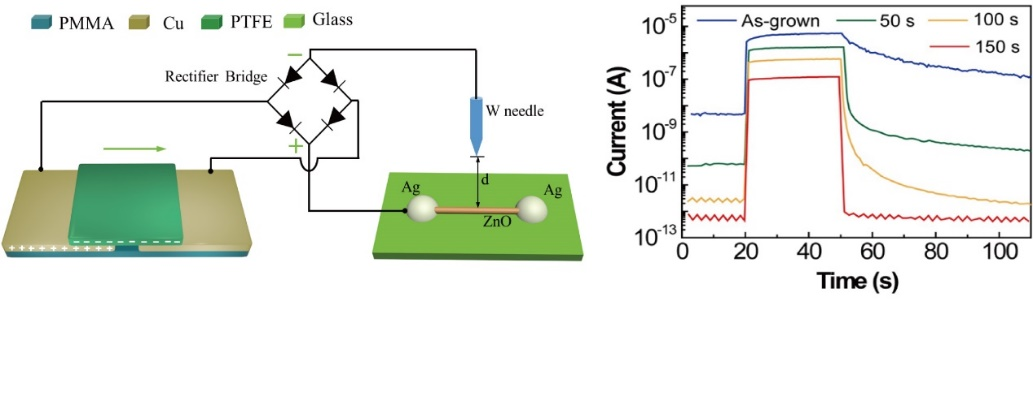Recently, the research of professor Cheng Gang's group "Tuning Oxygen Vacancies and Improving UV Sensing of ZnO Nanowire by Microplasma Powered by a Triboelectric Nanogenerator" was published in Nano Energy (if = 15.548)
Article links::https://doi.org/10.1016/j.nanoen.2019.104210
Plasma technology is a common method to passivate the surface of materials and improve the performance of devices. However, the traditional plasma generator is not only expensive and complex to operate, but also difficult to integrate with other measurement equipment, which limits the detection of plasma passivation effect. On the other hand, due to the miniaturization of material research, micro-plasma based on the evolution of plasma technology has become one of the hot topics of low temperature plasma research in the world. In 2018, the team led by Wang Zhonglin combined plasma with triboelectric nanogenerator(TENG), and proposed the concept of triboelectric micro-plasma based on the characteristics of high-voltage output of the generator.
Based on the discussion, this paper introduces a technology of controlling oxygen vacancies on ZnO nanowires by micro-plasma driven by high voltage of TENG. The results show that the oxygen vacancies on the surface of ZnO nanowires are gradually passivated by the active oxygen ions produced by micro-plasma by adjusting the passivation time. After passivation of oxygen vacancies in ZnO nanowires by Microplasma, the internal resistance of ZnO nanowires increases significantly. The switching ratio, gain and bandwidth product and recovery rate of ZnO nanowires passivated by micro-plasma are 254, 111 and 2651 times respectively. At the same time, the mechanism of controlling oxygen vacancies on the surface of ZnO nanowires by micro-plasma and improving their UV sensitivity are discussed.
The TENG has the advantages of simple structure, low price and convenient operation. The micro-plasma technology based on TENG can be integrated into the device system to passivate the surface defects and improve the performance of the device. It has potential application prospects to develop intelligent and multifunctional sensor networks in the era of Internet of things.

(a) Schematic diagram of the surface passivation system based on TENG. (b) Single-cycle time-resolved photocurrent curves of the single ZnO nanowire after different surface passivation time of 50, 100, and 150 s, respectively.